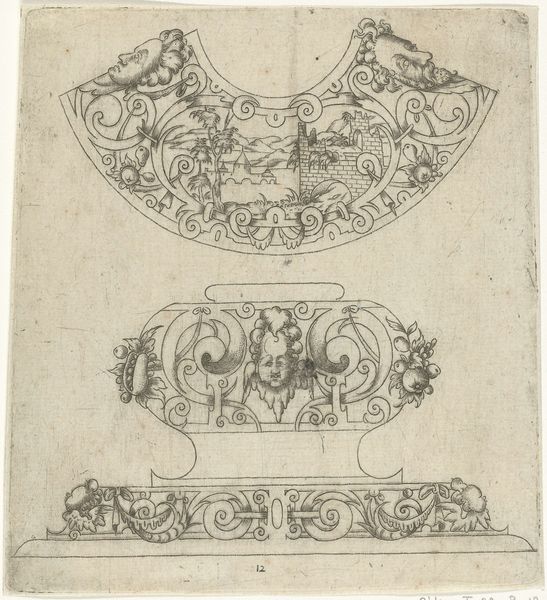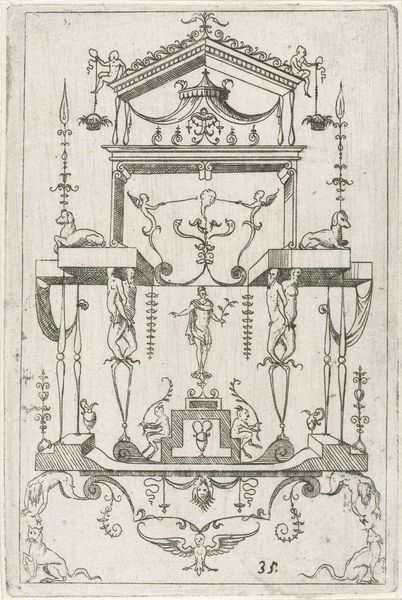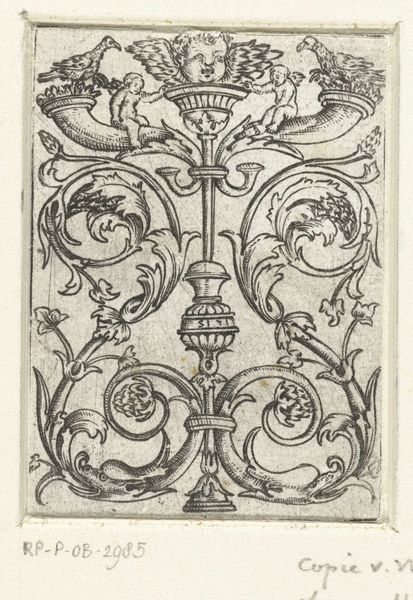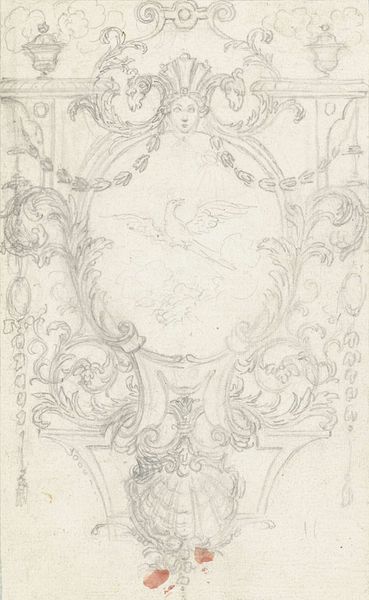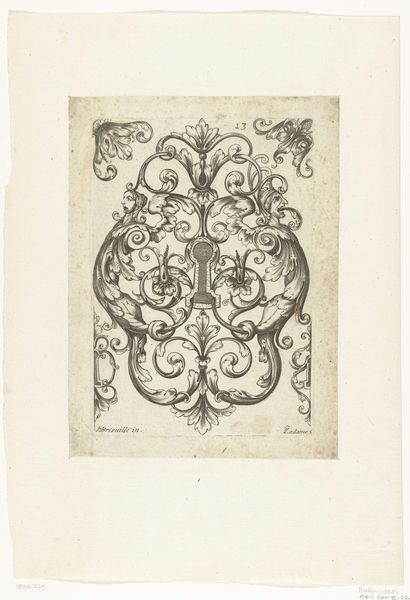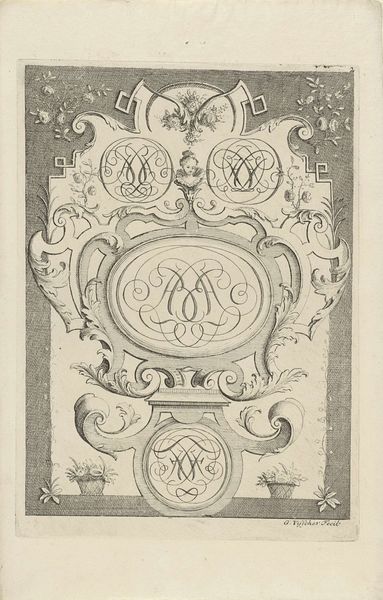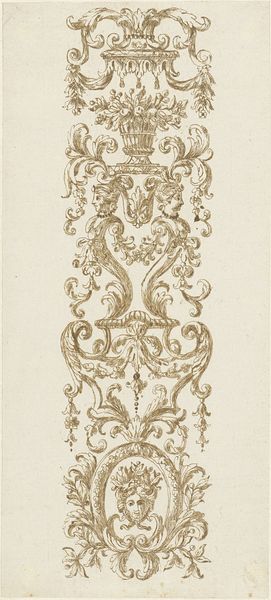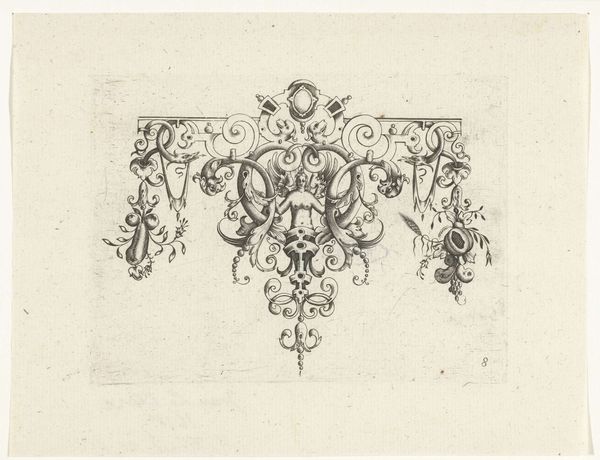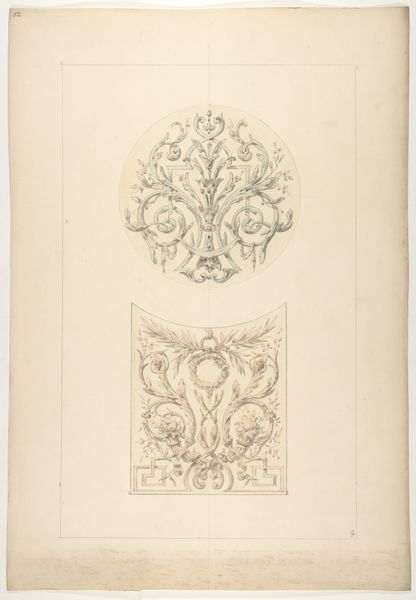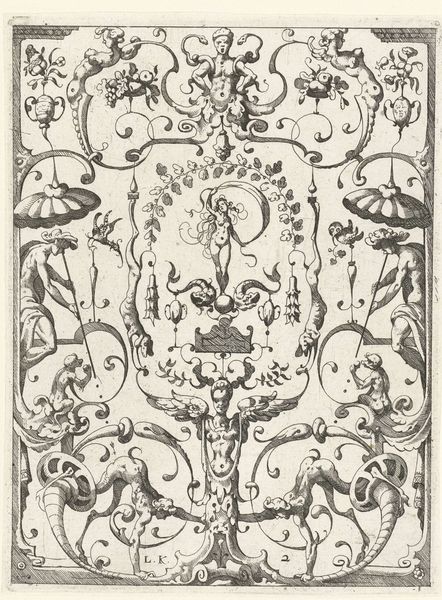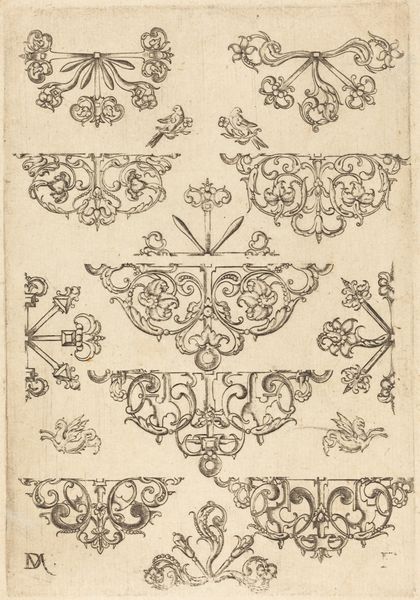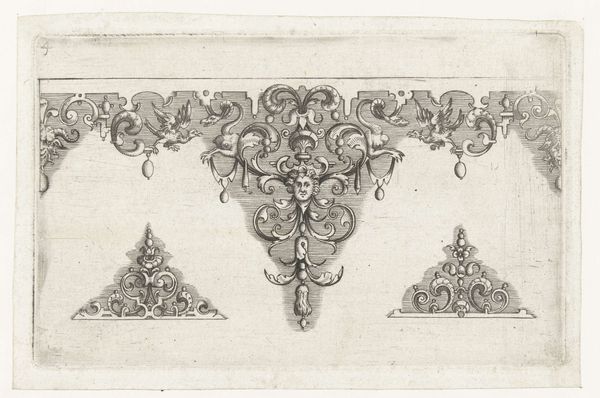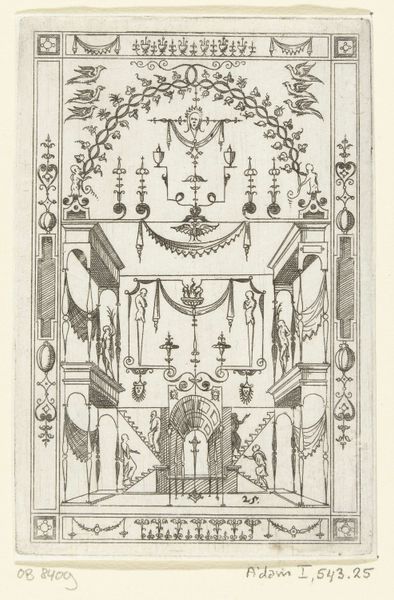
print, engraving
# print
#
mannerism
#
form
#
engraving
Dimensions: height 138 mm, width 119 mm
Copyright: Rijks Museum: Open Domain
Curator: This engraving, dating from around 1500 to 1598, is titled "Voet van een schaal," which translates to "Foot of a dish," and is currently held in the Rijksmuseum collection. What are your initial thoughts? Editor: It strikes me as incredibly ornate, almost excessively so. The level of detail crammed into such a small space is quite impressive. Curator: Indeed, and typical of Mannerist prints, which delighted in complex designs. It appears to be a template or pattern for a silversmith. Notice how it showcases various design elements: landscapes, grotesque masks, foliage, and even putti, all meticulously rendered in the engraving. We might want to examine what kinds of labor and skill would have been needed. Editor: Absolutely. Consider the social context too. Prints like these circulated widely, enabling the spread of artistic ideas and influencing decorative arts across Europe. The museum displays, preserves and thereby controls this history of taste. Who decided it was "museum worthy"? Curator: Precisely. And the production process is worth considering – the engraver needed highly specialized tools and training. The paper quality, the ink used, all affect the final product. Were these made for commercial reasons, for an apprentice's practice, or maybe for display in an academic context? Editor: I think these things also reflected status, didn't they? A silversmith producing wares based on these designs would have elevated their own position, and their patrons would show off this elaborate craftsmanship as a sign of their refined tastes. The design choices and its purpose played a key social role, don't you think? Curator: I completely agree. This print showcases the blending of high art and craft. It raises fascinating questions about how design was disseminated and consumed in the early modern period, what exactly we should deem as culturally valuable, and what impact access to these materials can have. Editor: Right, it seems the production and eventual circulation were influenced by politics, taste, commerce, and perhaps a rising merchant class who were making this kind of patronage more widespread. I’m really interested in its social role now. Curator: Thinking about these prints makes one consider the immense impact they have had and still have on the distribution and cultural meanings we place on art forms today. Editor: Yes, and on how museums create narratives around the material remnants they house. Thank you for these insights!
Comments
No comments
Be the first to comment and join the conversation on the ultimate creative platform.
